Learning how to bake the perfect cheesecake is all about quality ingredients, an uncomplicated recipe and mastering the simple method.
I recently had a conversation with one of our readers who was so nervous about baking a cheesecake for her husband’s birthday. She had previously encountered a couple of cheesecake disasters.
Understandably, she was not relishing the thought of ruining the centrepiece of the birthday celebration. I convinced her to do a practice run with a “just a vanilla cheesecake” to get a feel for the process of baking the perfect cheesecake.
Following this recipe and instructions she was delighted to perfectly bake both the practice cheesecake and the second as hubby’s birthday cake.
The advantage of learning with “just a vanilla cheesecake” is that it is very simple to prepare with uncomplicated ingredients. Also, you get a good feel for the proper consistency of a cheesecake batter.
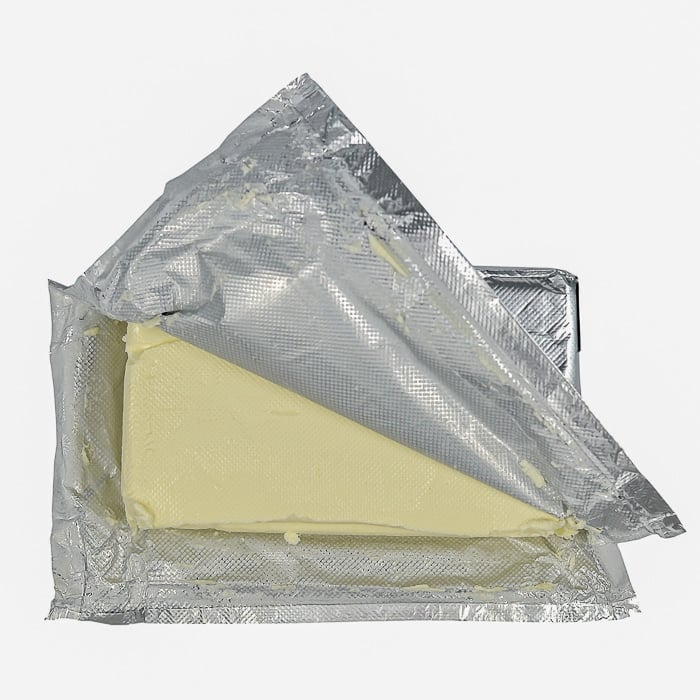
Cream Cheese.
It is also relatively easy to tell when a vanilla cheesecake is done. If the top of this cheesecake begins to brown at all, in all likelihood it is fully baked.
Although as the recipe states, it need not brown at all to be fully baked. I give the pan a little shake to test how much it wobbles after about an hour.
It is best to treat a cheesecake like a large baked custard which it really is. Residual heat will take care of any slightly wobbly centre even after it comes out of the oven.
In my opinion, baking the perfect cheesecake requires the use of a bain marie during baking.
A bain marie is simply a water bath that buffers the direct heat from the sides and bottom of the baking pan. This helps the cheesecake bake more evenly.
I bake my cheesecakes in a 9 inch spring form pan that has the bottom and sides wrapped in multiple layers of wide heavy duty aluminum foil. Therefore it forms a sort of boat that the cheesecake pan sits in.
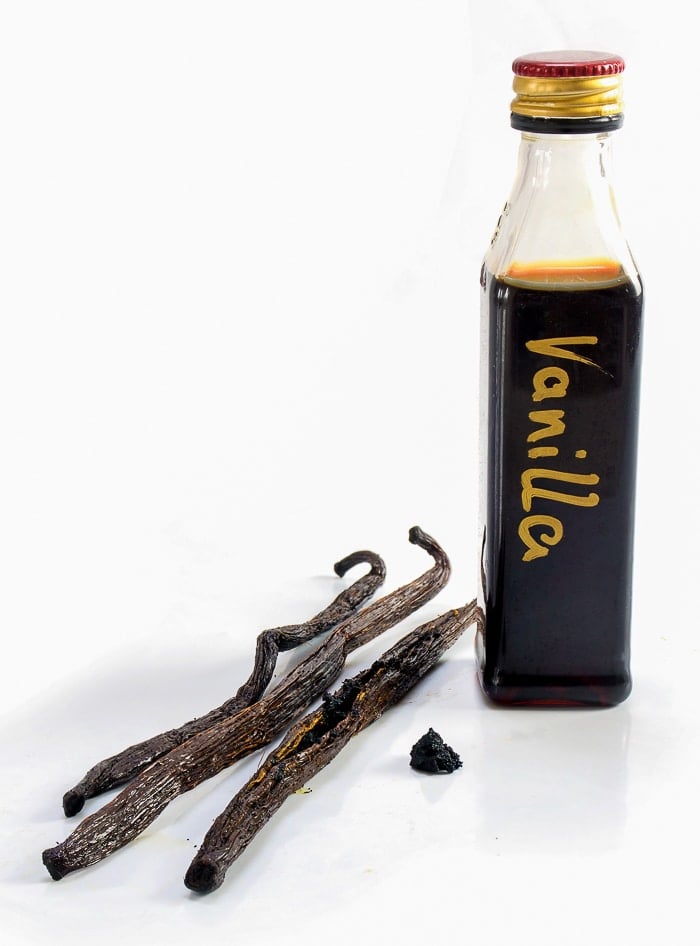
Pure vanilla extract is so much better than artificial.
The roll of aluminum foil that I use is about 16 inches wide. I use at least 4 layers of foil to make sure that no water leaks in and ruins the crust of my cheesecake.
The aluminum foil wrapped pan is then placed inside a larger baking pan; I use a 12 inch cake pan. Boiling water is then poured into the larger pan filling it from 1/2 to 2/3 of the way to the top.
I find it best to pour the boiling water into the pan after it is placed on the rack in the oven. Then, you are less likely to splash water onto the cheesecake or inside the aluminum foil.
I reuse the aluminum foil for several future cheesecakes, adding a couple of layers to it each time just to be safe.
I still recommend that you use the aluminum foil wrap around the cheesecake pan. The aluminum foil still offers a good buffer to the heat. High heat and baking too quickly is the main reason that a cheesecake becomes dense and not creamy.
The recipe for the Maple Apple Topping on the cheesecake above can be found here: Maple Apple Cheesecake.
Like this Cheesecake recipe?
You’ll find hundreds of other sweet ideas in our Cakes & Pies Category and even more in our Desserts Category.
It’s easy to keep up with the latest home style cooking & baking ideas from Rock Recipes. Be sure to follow Rock Recipes Facebook Page and follow us on Instagram. Plus you’ll see daily recipe suggestions from decadent desserts to quick delicious weekday meals too.
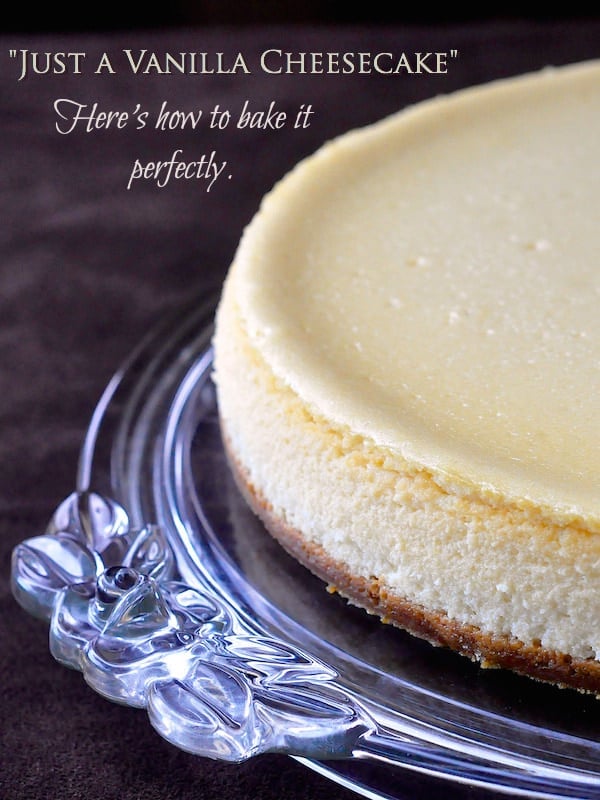
How to Bake the Perfect Cheesecake
You can also sign up for our FREE newsletter to know immediately when we add new recipes. You’ll also get weekly suggestions for great family friendly meals and desserts too!
Rock Recipes a participant in the Amazon Services LLC Associates Program, an affiliate advertising program designed to provide a means for us to earn fees by linking to Amazon.com and affiliated sites. Our product recommendations are almost exclusively for those we currently use or have used in the past.
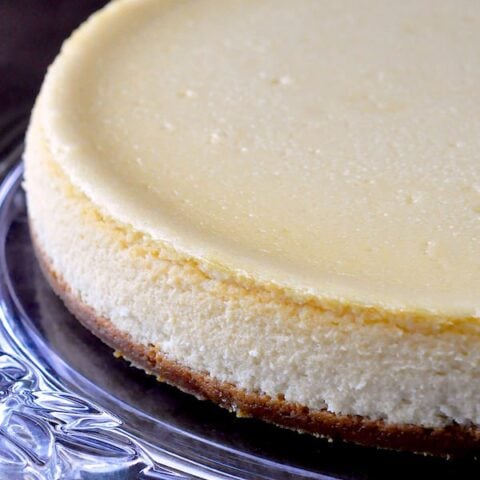
How to Bake the Perfect Cheesecake Every Time or "Just a Vanilla Cheesecake"
How to Bake the Perfect Cheesecake Every Time or "Just a Vanilla Cheesecake" - Learning how to bake the perfect cheesecake is all about quality ingredients, an uncomplicated recipe and mastering the simple method.
Ingredients
For the cookie crumb crust
- 1⅓ cups graham cracker crumbs
- 3 tbsp sugar
- ⅓ cup melted butter
For the cheesecake batter
- 3 eight ounce packages ounces cream cheese, (3 cups)
- 1 cup sugar
- 3 eggs
- 3 tsp vanilla extract, (or, even better, the seeds from one large vanilla pod)
- 1 cup whipping cream
Instructions
To prepare the cookie crumb crust
- In a small bowl combine the graham cracker crumbs, sugar and melted butter.
- Press the crumb mixture into the bottom of a lightly greased or parchment lined 9 inch spring form pan. (Grease bottom only!) Parchment paper is ideal here because it makes it very easy to release the cheesecake from the bottom of the pan.
To prepare the cheesecake batter
- Cream together the cream cheese and sugar for 2 to 3 minutes until well combined.
- Add the eggs, one at a time, beating well after each addition.
- Beat in the vanilla extract (or vanilla pod seeds. If using a vanilla pod, scrape all the seeds out and stir them very well into the whipping cream in the next step. This will help to break up the sticky vanilla pod paste and make sure the tint black seeds are evenly distributed throughout the cheesecake.)
- Finally blend in the whipping cream well until the batter is very smooth. Using a rubber bowl scraper/spatula, scrape the bottom and the sides of the bowl as well as the electric beaters/paddle and give the batter a final beating for 1 minute on a higher speed. This final step ensures that there are no lumps in the batter and introduces a little air into the cheesecake to make it lighter.
- Pour over the prepared base and bake in a bain marie at 300 degrees F for 60-70 minutes. (Oven temperatures will vary slightly. Mine takes the full 70 minutes and you can go to 75 if you feel you need to.)
- Don't be an compulsive oven door opener! Don't open it at all in the first hour.
- The cheesecake does not have to brown at all in order to be fully baked; the surface of the cheesecake should lose any shine when the cake is properly baked. It can still be slightly wobbly just at the center at this point.
- Remove the cake from the oven and run a sharp knife completely around the edge of the pan. This will allow for the cheesecake to shrink as it cools and hopefully not crack (Allow the cheesecake to cool thoroughly on a wire rack at room temperature. (NOT in the fridge). Refrigerate after fully cooled.
Notes
In my opinion, baking the perfect cheesecake requires the use of a bain marie during baking. A bain marie is simply a water bath that buffers the direct heat from the sides and bottom of the baking pan to more evenly bake the cheesecake from the sides to the center. I bake my cheesecakes in a 9 inch spring form pan that has the bottom and sides wrapped in multiple layers of wide heavy duty aluminum foil which forms a sort of boat that the cheesecake pan sits in. The roll of aluminum foil that I use is about 16 inches wide. I use at least 4 layers of foil to make sure that no water leaks in and ruins the crust of my cheesecake. The aluminum foil wrapped pan is then placed inside a larger baking pan; I use a 12 inch cake pan. Boiling water is then poured into the larger pan filling it from ½ to ⅔ of the way to the top.I find it best to pour the boiling water into the pan after it is placed on the rack in the oven as you are less likely to splash water onto the cheesecake or inside the aluminum foil. I reuse the aluminum foil for several future cheesecakes, adding a couple of layers to it each time just to be safe. EVEN IF YOU CHOOSE NOT USE A BAIN MARIE still use the aluminum foil wrap around the cheesecake pan. The aluminum foil still offers a good buffer to the heat. High heat and baking too quickly is the main reason that a cheesecake becomes dense and not creamy.
Nutrition Information
Yield
12Serving Size
1/12Amount Per Serving Calories 258Total Fat 15gSaturated Fat 9gTrans Fat 0gUnsaturated Fat 5gCholesterol 85mgSodium 114mgCarbohydrates 28gFiber 0gSugar 23gProtein 3g
The nutritional information provided is automatically calculated by third party software and is meant as a guideline only. Exact accuracy is not guaranteed. For recipes where all ingredients may not be used entirely, such as those with coatings on meats, or with sauces or dressings for example, calorie & nutritional values per serving will likely be somewhat lower than indicated.

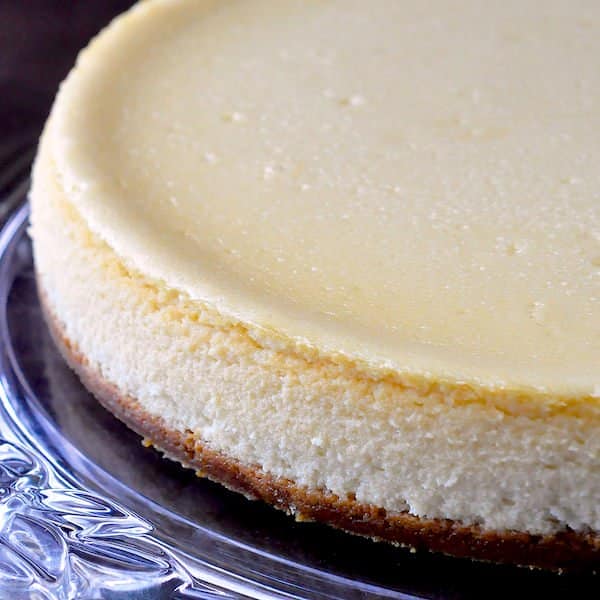
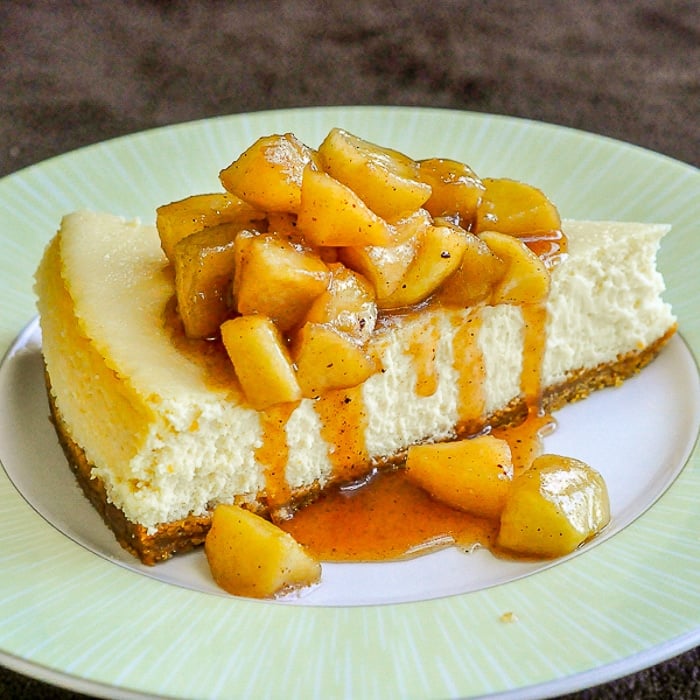

Jennifer
Sunday 10th of November 2019
I will first start by saying this is hands down the BEST cheesecake recipe! I want to make a pumpkin cheesecake but not sure how I would incorporate the pumpkin into this recipe.
Leanne
Sunday 7th of April 2019
Thanks for this recipe. I made the maple apple version and won my bake off competition in work. I'm currently baking one to later have as a strawberry cheesecake. Recipe is brilliant. I bought way too many packets of cream cheese but that just means I have to make more. Thanks!!
Jana
Sunday 17th of March 2019
This is the only cheesecake recipe I use now. Always comes out creamy and light. Making it again this afternoon as a vehicle for some grapefruit curd I need to use.
Morgan
Monday 25th of February 2019
If i want to make it in an 11 inch pan do I double the recipe?
Barry C. Parsons
Tuesday 5th of March 2019
I always use π r2 to determine the pan size compare tp the recipe size and scale the recipe accordingly.
Lyla A.
Wednesday 19th of December 2018
Barry, I have made this recipe a number of times and it is my go-to cheesecake! I love all cheesecakes, but my favorite is always a "just vanilla", served plain. My only change is to make a shortbread crust, as that's my preference over graham. I agree with you that a bain marie is a must! Also, everyone thinks I'm weird, but I eat my slice backwards, saving that little point from the center for very last as its the most creamy and delicious bite! I just wanted to share how much I enjoy this recipe, and it is on my Christmas menu again this year. Best!
Barry C. Parsons
Wednesday 19th of December 2018
Thanks for the kind words. I admit, I have eaten cheesecake that way too! Especially if it is slightly overbaked! Barry.